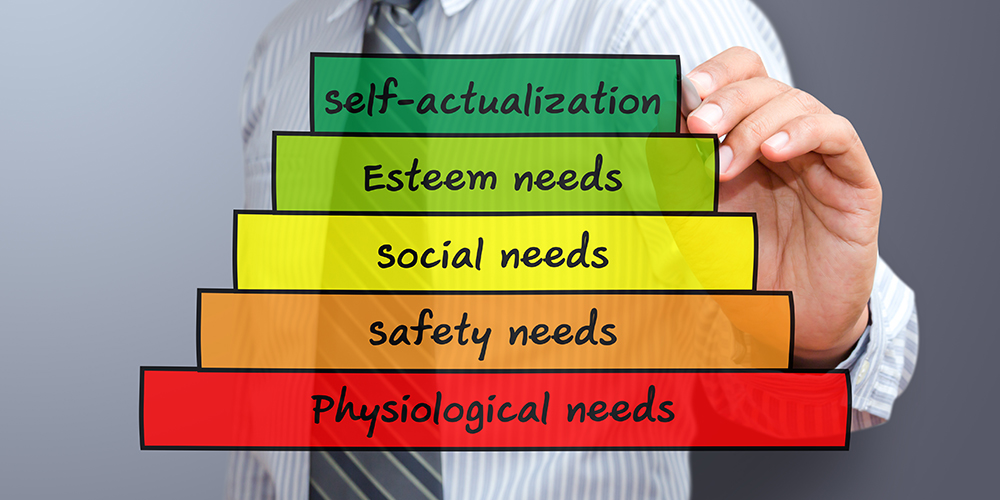Lock Blog
A resource for consumers, locksmiths, and security professionals
A resource for consumers, locksmiths, and security professionals

If you are in the security industry, or you follow it as a hobby, then chances are you have noticed a very alarming trend. It really doesn’t make much sense when we look at how often the media and our various news outlets try and scare us. The internet shows us the even more terrifying truth, which the mainstream media can’t or won’t. Anyone can learn how to make a bump key, pick a lock to open locked doors, break into a car, and the list goes on. When you mention the hard ways, the ways that people need to learn, critics don’t miss the opportunity to remind you that a hammer through a window is the only key you need. Our perception of security seems quite accurate. Most people I talk to understand how fragile it is. So why don’t more people take action? I see cars in parking lots with GPS consoles and shopping bags in plain site. Windows rolled down halfway. I see people with four locks on their door, lock one, and leave the house. So many Kwikset, Master, and Schlage door knobs and deadbolts, and no one concerned about how many people might have their same key. Why is this the norm? Why don’t people care about security?
To know what you know, there is a bit of a balancing act in discovering what is unknown. One of the things that seem to be common knowledge is that lock picking is not as easy as the movies make it look. True that the majority don’t understand how it works, but most know that it is not as simple as putting something in the lock and poking around. So within what people know there is the lack of knowledge on the intricacies of lock picking. Take stock of what you know and that should give you some indication of the information you need to find out. Do you know how a lock works (specifically not generally)? Think of the information you know, then think of it in terms of explaining it to a 6-year-old. As the classic Albert Einstein quote goes, “If you can’t explain it to a six-year-old, you don’t understand it yourself.”

The majority of people seem to get half of the story. It is just enough to make them feel safe. There are certainly things that people do not want to accept. Unlike what people know, these are the things that people do not want to think about, and keep themselves from knowing. Facts like the prevalence of bump keys and car door wedges. Though bump keys have some mainstream attention, they have failed to catch the attention of the general public.
Most people do not realize or advertise, how easy it is to wedge a car door open. The simple methods that are not as blunt as a hammer. The general idea seems to be that these very crude methods are just refined enough to not be used by common thieves, and not refined enough for master criminals. Truthfully these are very common methods for home and auto thefts (bump keys and wedges respectively). When I typed “bump keys” into Google, the first results were different ways to purchase them. Automotive wedges are just as easy to purchase, and even easier to make.
Then there is the math behind key codes. Anyone can find the depth charts for the different lock companies (that makes it possible for anyone with a file and a ruler, to make a bump key). You can also get a key gauge to decode the more common key types. Based on that information you can see the amount of possible unique key combinations for your lock. Schlage has 9 depths, and an average of 5 grooves on the key. 9x9x9x9x9= 59,049. Standard Kwikset keys have 5 grooves and 7 depths. 7x7x7x7x7= 16,807. The Kwikset SmartKey has 6 depths and 5 grooves. The average Master Lock has 4 grooves and 8 depths. 8x8x8x8= 4,096.
That number means 1 out of (insert your number here) people that have your exact same key. Then taking into account where the lock was purchased and at what time, the similarity between the locks on the houses in your area becomes staggering. Since retail outlets buy keyed alike products, most Lowes and Home Depots will have three unique keyed alike options. That means that if you neighbor got new locks around the same time you did, you may have the same key. Similarly, if all the houses in your area were made at the same time, they could have a large number of repeating key codes.
The same logic also applies to most car keys. Most older models will have wafer locks, which at the same time as being easier to pick, and having a finite number of unique key codes, also have special tools to open the locks. Most cars from the 90’s and earlier can be opened with Jiggle keys (also known as auto jigglers). Certain motorcycles can be started with this type of key. The reason these Jiggle keys work is because even the variations of the depths are not unique enough. But motorcycles can also be lifted or rolled into truck beds, and cars (as previously mentioned) can have their doors wedged open.
Granted, transponder chips, key fobs, and other anti-hotwire methods make newer cars very hard to steal, but the contents of the vehicle are still very much up for grabs. I have had my car broken into and the middle seats stolen, along with all my canvas grocery bags, and one of the two lawn chairs I had in the trunk. Thieves steal weird things. They do not necessarily want your car, they might just want your GPS, a phone on the dashboard, or your middle seats.

Security is one of the most important things to a human’s health. The most commonly acknowledged progression of human necessities is Maslow’s Hierarchy of Needs. If you ever took health class in school, you may remember the representation of these ideas in the form of a pyramid. The base of the pyramid is the physical needs of the body. That includes food, water, sleep, etc. Right after the basic needs for just existing, is the need for safety. Once you exist, you must keep on existing, and safety gives way to survival. Security offers human beings the peace of mind that the things they have gathered and worked for will not be taken away. It goes beyond capitalism and the quest for material cultivation. Safety is an important part of psychological well-being. Beyond the necessary feeling of security, it is important to actually be secure. If you are vulnerable to attacks then you may get attacked. Beyond your possessions being stolen, and your state of mind, security exists to protect you from things that would cause harm to your physical body.
It is simple to say that security matters. The harder question to answer is, “How much does it matter?” I would say that it matters about the same as it did to Maslow. It is one of the most important things for living. Shelters have existed since life has existed. From trees and caves to huts and homes. Every animal attempts to give itself a certain amount of distance from the outside world. There is an ingrained need to retreat from the harsh elements and wild animals. Shelter is attained with security in mind. The caveman chose a cave because it offered shelter from the wind, the rain, and the sun, but it would also have one direction you needed to point a spear at. From there we crafted and refined our shelters. One point of entry was fantastic, but what if we could close off that point as well. The door solved this problem. But how would the door be fastened not to open. Cultures answered this question in different ways. The answer that stuck throughout the history of these locks became the modern lock. Security is not a developed taste, it suits a need. We need to be protected, and great security relies on finding out what it is we need protection from.

The answer might surprise you. Contrary to most news reports, crime is decreasing, pretty much universally. Not just in the United States, but in most developed nations. The figures have a lot of people baffled. Social scientists are attempting to figure out what the root cause to this recent trend and so far all of the proposed answers leave much to be desired. Everything from the legalization of abortion to the restrictions on lead in everyday products. Each theory has a hole and cannot be the sole reason for the very steady drop in crime. The other thing to consider is how reliable the statistics are that these studies are using. The most popularly cited crime stats come from the FBI. The most recently released data has the trend continuing with more than a 5% decrease in robbery, a 10.5% drop in burglaries, larceny down almost 3%, and a 1.5% decrease in motorcycle and automotive theft.
Though this may be the best example of criminal statistics, it is important to understand the limits of the study’s methodology, and statistics in general. Beginning with statistics, there are very important things to remember. These things may seem pretty straightforward, and sound like common sense, but this rarely keeps false claims from being made, or silly questions from being asked. Firstly, statistics cannot give you the entire story. The most objectively gathered stats cannot tell you what happened, only what was reported. If information was left out, or people lied while being surveyed, this is not information that can be gathered.
In the case of this study, there is no way to know if all of the crimes of every nature were reported. Nor is it possible to know if those arrested were guilty. Even though these things cannot be known, these are not grounds to dismiss the information. Something is not false because it is lacking all aspects of the evidence. If that were the case, science would not be able to create anything. There are always going to be unknowns. That is not to say that a stat is right because it cannot be proven wrong. Flaws in methodology can provide reasons to dismiss statistics.
Because statistics are not strictly math, the human element of a study can taint the results. In the case of the FBI crime report statistics, there are a number of factors that compound to make them unreliable. Firstly, they use the hierarchy rule. This method of data collection requires that only the most serious offense will be recorded in cases where a criminal has committed multiple crimes.
The hierarchy that the FBI uses (in descending order of most severe to least) is violent crimes, forcible rape, robbery, aggravated assault, and lastly property crimes. There is nothing too alarming for this to be used as a way of to artificially decrease the number of property crimes. Even though rape and aggravated assault have increased by a combined total of 4.4%, property crime has decreased collectively by almost 20%. Assuming that every rape and assault was coupled with a property crime, there is still a 15.6% overall decrease.
More than the use of the hierarchy rule, the way the information is reported causes the need for alarm. The National Incident-Based Reporting System (or NIBRS) has this to say about “Agency Participation”: “Implementation of the NIBRS is occurring at a pace commensurate with the resources, abilities, and limitations of the contributing law enforcement agencies.” Such limitations can be found on the NIBRS requirements page that stresses, “because the data to be extracted from the reports for national purposes are more detailed in NIBRS than in the traditional UCR Summary system, increased data entry and data processing burdens are involved.”
If there is any impediment to the reporting process for a statistic, it raises a red flag. Self-reporting is often looked down upon in the world of statistics, especially when the onus falls on the reporter to meet the demands of the study. The need to “demonstrate its ability to meet NIBRS’ reporting requirements” is already a way of denying participation based on negligence and incompetence (aspects of a law enforcement agency that may coincide with a high crime rate).
Due to the lack of active data recovery, and restrictive merit based participation, I cannot wholeheartedly support the claims made in the study. I do, however, have to recognize that it is the most comprehensive study available. Keeping in mind that it may not be entirely valid, it is definitely the most valid grouping of this type of statistics. This, coupled with the trend being represented globally, does seem to suggest some sort of global decrease in crime. And that means very little to me. Though the chances of being a victim of a crime might be getting lower, you can lower them even more by accepting personal responsibility and properly assessing your home security. All the people not getting victimized mean pretty little to the victim. We do not live in a utopia. These averages of people may continue to get safer, but it is individuals that have their homes broken into and their automobiles stolen or vandalized. The collective “We” might be getting safer, but “You” are a different story.

The importance of safety cannot be diminished. People need to care about security in order to get the most out of it. Everyone needs to find out more about their personal security, and the ways they are undermined. It is strategic preventative planning and preparation. At the heart of preventing crime, you do need to understand it. Figure out how criminals think, and then put in the leg work to think and plan beyond them. Security is one of the essential aspects of human life. At the heart of sanity, there is a need for sanctuary. Don’t take refuge in the false comfort that statistics may offer. Build security, and refine your protection. Your average locks and keys build paper walls. They offer the look of security. But it only looks like security to those that would never wish you harm. It is an unfortunate reality that the rules only exist for those that would break them. To a similar extent, the base level of security is understood by most criminals. It takes unique ideas and the investment of your time to really build meaningful security. It is not about buying products or selling fear. It is about protection and prevention. You cannot control humanity. You can control what protects you from the worst of them.
Category: Crime, Safety & Security